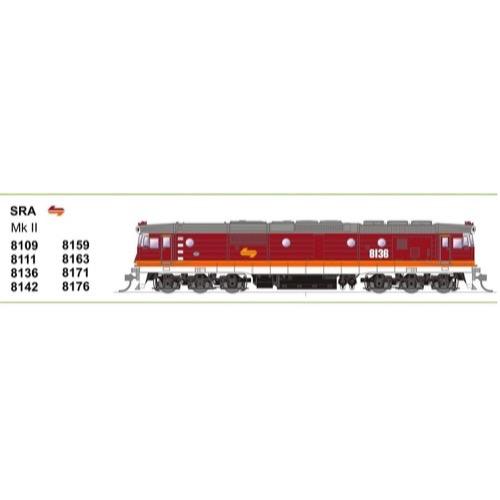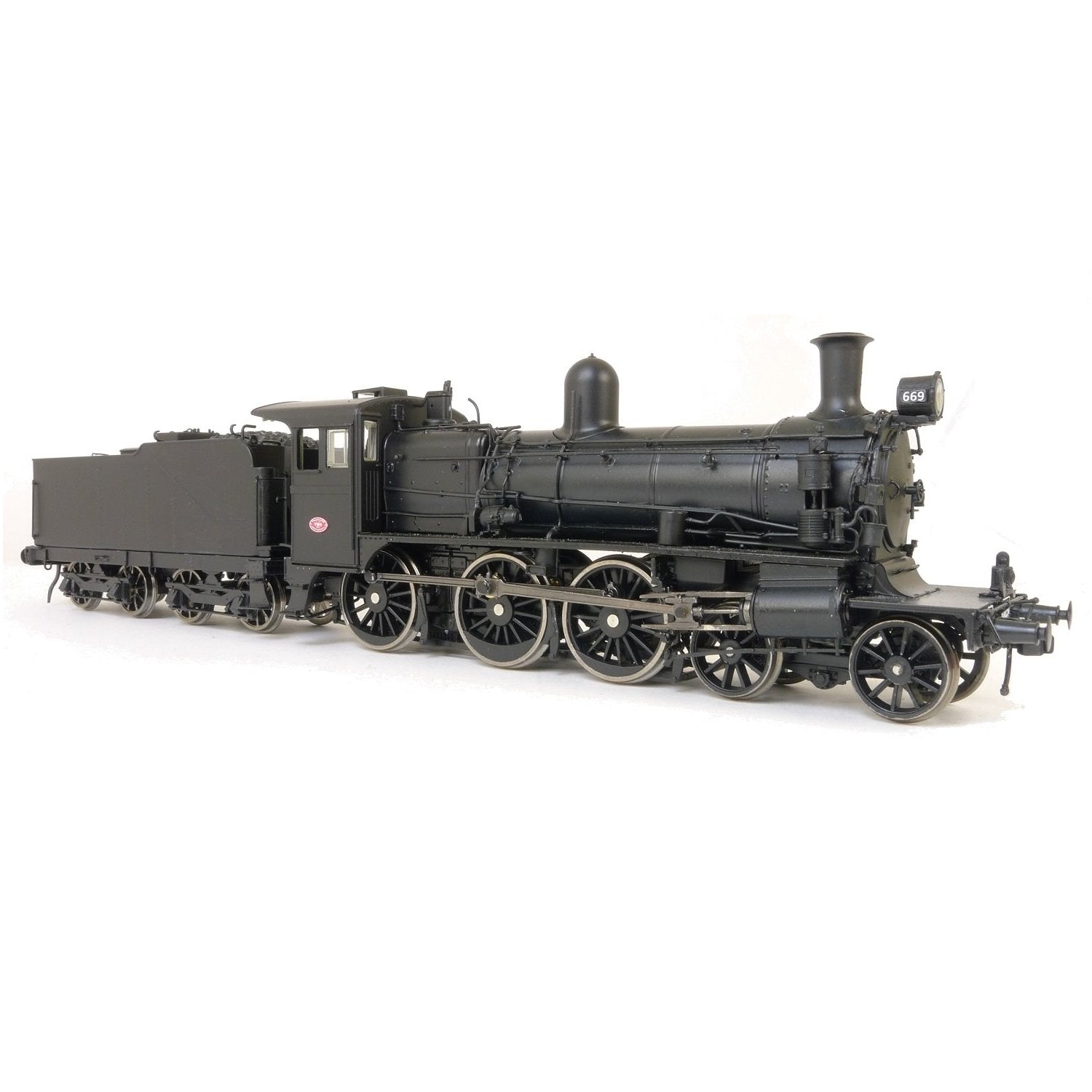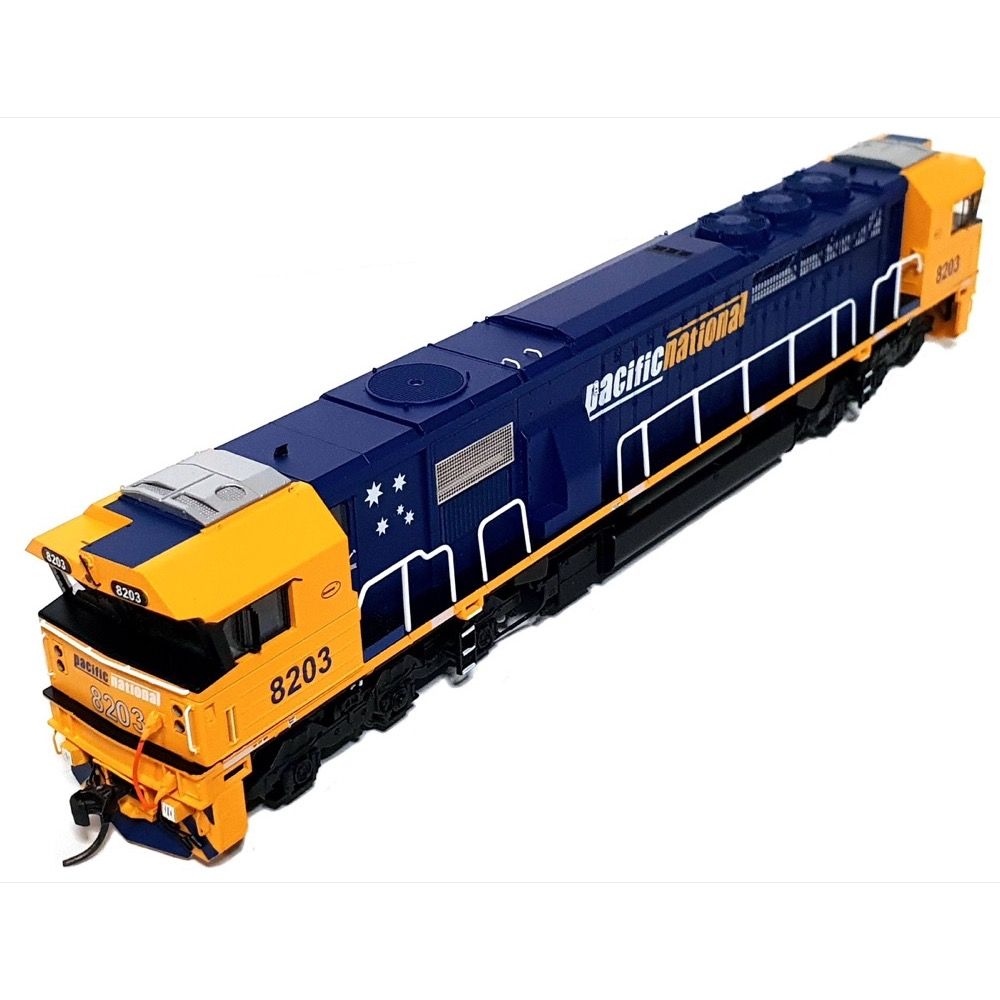
On Track Models HO 8244 Freight Rail 82 Class Locomotive
137.00
$
<h3>Early History of the 82 Class</h3>
<p>March 23rd, 1994 heralded a new era in freight rail operations in Australia. On this day, Clyde Engineering in association with General Motors EMD released the first of fifty eight ‘82' Class locomotives from Clyde’s Mittagong plant.</p>
<p>These locomotives along with their imported cousins, the EMD Canadian built 90 class, marked a new beginning in the way a locomotive fleet was operated and maintained.</p>
<p>Whilst these locomotives were operated by Freight Rail (a business unit of State Rail), they are actually supplied and serviced by Clyde at their Kooragang Island maintenance facility. This leasing arrangement was known as ‘Ready Power’</p>
<p>Under the terms of this contract, Clyde would be responsible for the overall up keep and maintenance of these units for a period of fifteen years. Although minor servicing and provisioning was undertaken by Freight Rail, major servicing and repairs was completed by Clyde.</p>
<p>With the introduction of these locomotives a wide spread reduction of the NSW locomotive fleet had begun. The first casualties were the veteran fleet of 44 class Alco’s, then the 45 and 442 classes along with the Mark I 48 class. Further reductions to the locomotive occurred with the withdrawals of the 422 and 49 classes.</p>
<p>This overall fleet reduction reduced the average age of Freight Rail’s locomotive fleet from over twenty five year old to approximately ten.</p>
<p>These locomotives have travelled all over NSW and have ventured into Queensland and Victoria on intermodal freight services, and in South Australia on the Leigh Creek coal service. They are currently seen on both coal and wheat services all over the state, through Sydney, and the occasional local trip train around the Sydney metropolitan area.</p>
<p>On Track Models is pleased bring you this highly desired locomotive as a highly detailed model in HO Scale.</p>
<h3>82 Class Improvements</h3>
<ul>
<li>ESU designed PCB with two sugar cube speakers</li>
<li>Independent working headlights, white and red marker lights (DCC only)</li>
<li>See through Dynamic blower housing with box</li>
<li>Improved one-piece MU cables</li>
<li>Improved air hoses</li>
<li>Improved axles bushes for better electrical pick up</li>
<li>Factory Painted & Decorated in new PN livery</li>
</ul>
<h3>82 Class Model Locomotive Standard Features</h3>
<ul>
<li>Ready-to-Run</li>
<li>Scale AMRA Profile Metal Wheels</li>
<li>All wheel drive - All wheel pick up</li>
<li>18" Recommended minimum radius</li>
<li>Highly detailed bogies with separately applied parts</li>
<li>Easy access to the DCC 21 pin plug</li>
<li>Easy body removal</li>
<li>Quality 5 pole skew wound motor</li>
<li>Die cast metal chassis with recesses for twin speakers</li>
<li>Twin brass flywheels</li>
<li>Etched metal detail parts</li>
<li>Separately applied metal parts</li>
<li>Genuine Kadee Metal Couplers</li>
<li>Detailed cab interrior</li>
<li>Operational headlights, foglights, & marker lights</li>
<li>Compatible with Code 70, 83, & 100 Rail</li>
<li>Accurate Paint Schemes & Printing</li>
<li>Factory Painted & Decorated</li>
</ul>
<br>
<h3>Photos shown are representative of the finished model. Numbers and colours may vary on final product.</h3>
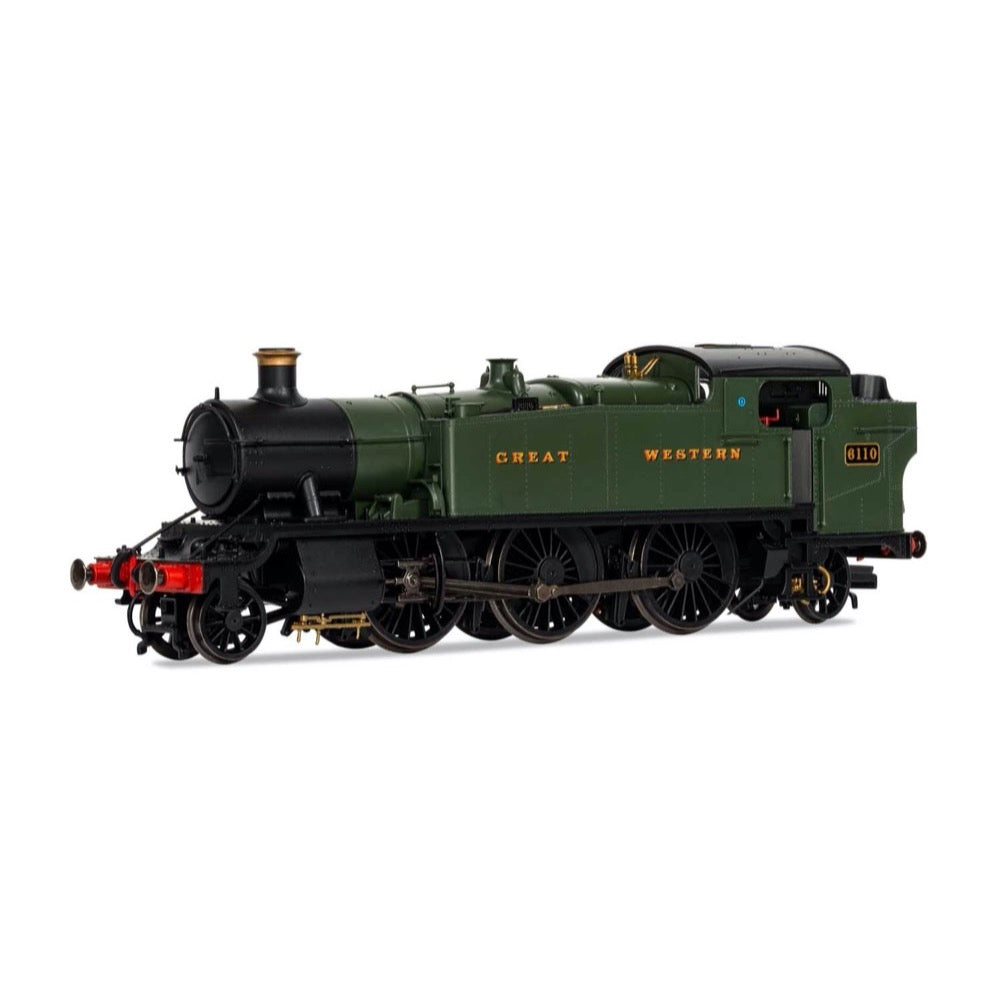
Hornby R3721 GWR Class 61xx Large Prairie 2-6-2T 6110 - Era 3
121.00
$
<p>Built at Swindon Works under Lot No. 269 in August 1931, Diagram A10 Class 61xx 'Large Prairie' No. 6110 entered traffic at Slough, employed on London suburban services, even over London Underground metals.</p>
<p>6110 was the first of the class to be fitted with a cab shutter from new and carried tripcock gear from new for operation on the Underground tracks.</p>
<h3>Specifications</h3>
<ul>
<li>Colour: Green</li>
<li>DCC status: DCC Ready 8 pin socket</li>
<li>Finish: Pristine</li>
<li>Gauge: OO</li>
<li>Livery: Green</li>
<li>Minimum radius curve: nd Radius (438mm)</li>
<li>Motor: 5 Pole Skew wound</li>
<li>Power pickup: All wheels</li>
</ul>
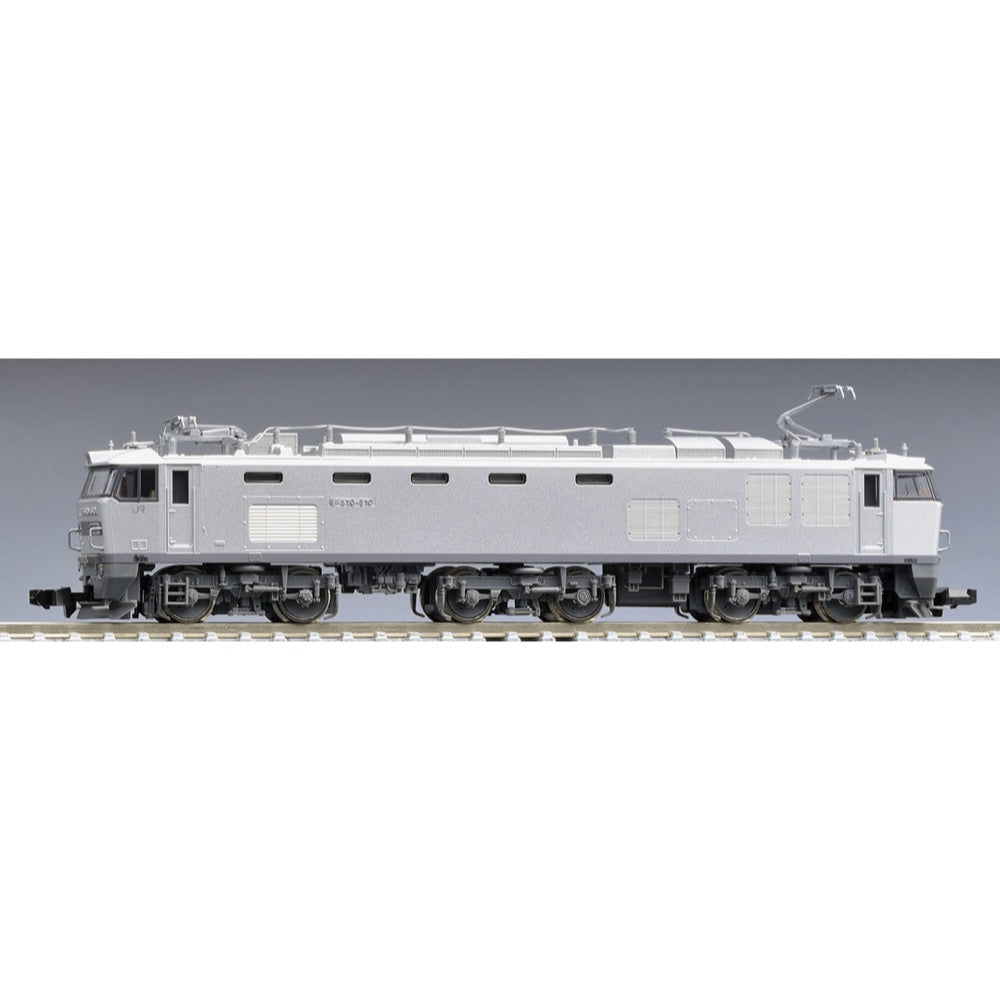
Tomix 7183 N 7183 EF510-500 Electric Locomotive JR Cargo Silver
54.00
$
<p>The EF510-500 series is an AC/DC electric locomotive that was introduced in 2009 to replace the EF81 series at JR East Tabata Depot, which was used to pull the sleeper express trains "Hokutosei" and "Cassiopea" and freight trains. A total of 15 cars were introduced, 13 in the Hokutosei color with a blue body and gold stripes and shooting stars on the sides, and 2 in the Cassiopeia color with a silver body and five-color shooting stars on the sides. However, with the discontinuation of regular service of the "Hokutosei" and "Cassiopea", all of the cars were transferred to JR Freight by 2016.</p>
<p>Although the transferred EF510-500 series no longer has the decorations on the sides of the body, it continues to be used in its original blue and silver paint along with the red EF0 series. It is mainly used on the Japan Sea Longitudinal Line, where the EF81 series was previously used, and in recent years it has been used in an expanded range of areas such as the Chuo-Nishi Line and the Tokaido-Sanyo Main Line up to Okayama.</p>
<h3>Features</h3>
<ul>
<li>The EF510-500 series has been remodeled to have the same structure as the <7164> EF510-0 series additional model, and has been newly produced to reproduce it</li>
<li>The former Cassiopeia towing locomotive of the EF510-500 series is reproduced as a silver-painted vehicle</li>
<li>The headlights are equipped with a constant-on board</li>
<li>The headlights are lit by incandescent LEDs</li>
<li>The front handrail (vertical) is included as a separate part</li>
<li>JR mark printed</li>
<li>The number plate is included as a separate part "EF510-509・510"</li>
<li>Signal flares and whistles are included as separate parts</li>
<li>Dummy coupler and self-coupled TN coupler included</li>
<li>Uses power with flywheel</li>
<li>Uses gray bogie frame and silver wheels</li>
<li>Uses M-13 motor</li>
</ul>
<h3>Accessories</h3>
<ul>
<li>Runner parts: Number plate (for front)</li>
<li>Runner parts: Number plate (for side)</li>
<li>Runner parts: Handrail</li>
<li>Runner parts: Whistle</li>
<li>Runner parts: Signal flare</li>
<li>Parts: Automatic TN coupler</li>
<li>Parts: Automatic dummy coupler</li>
<li>Runner parts: Dummy coupler base</li>
</ul>
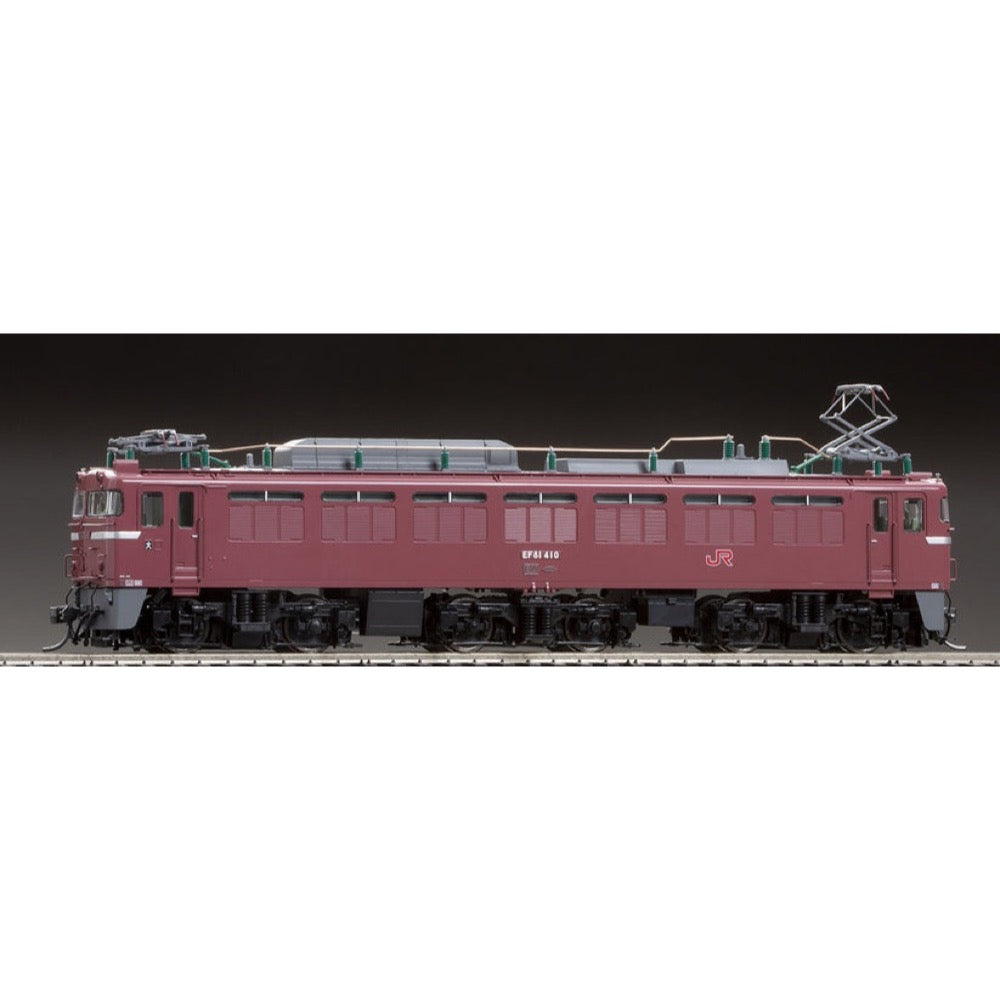
Tomix 52519 HO EF81-400 type Electric Locomotive (JR Kyushu specification/PS)
283.00
$
<p>Tomix HO EF81-400 type (JR Kyushu specification/PS) [52519]</p>
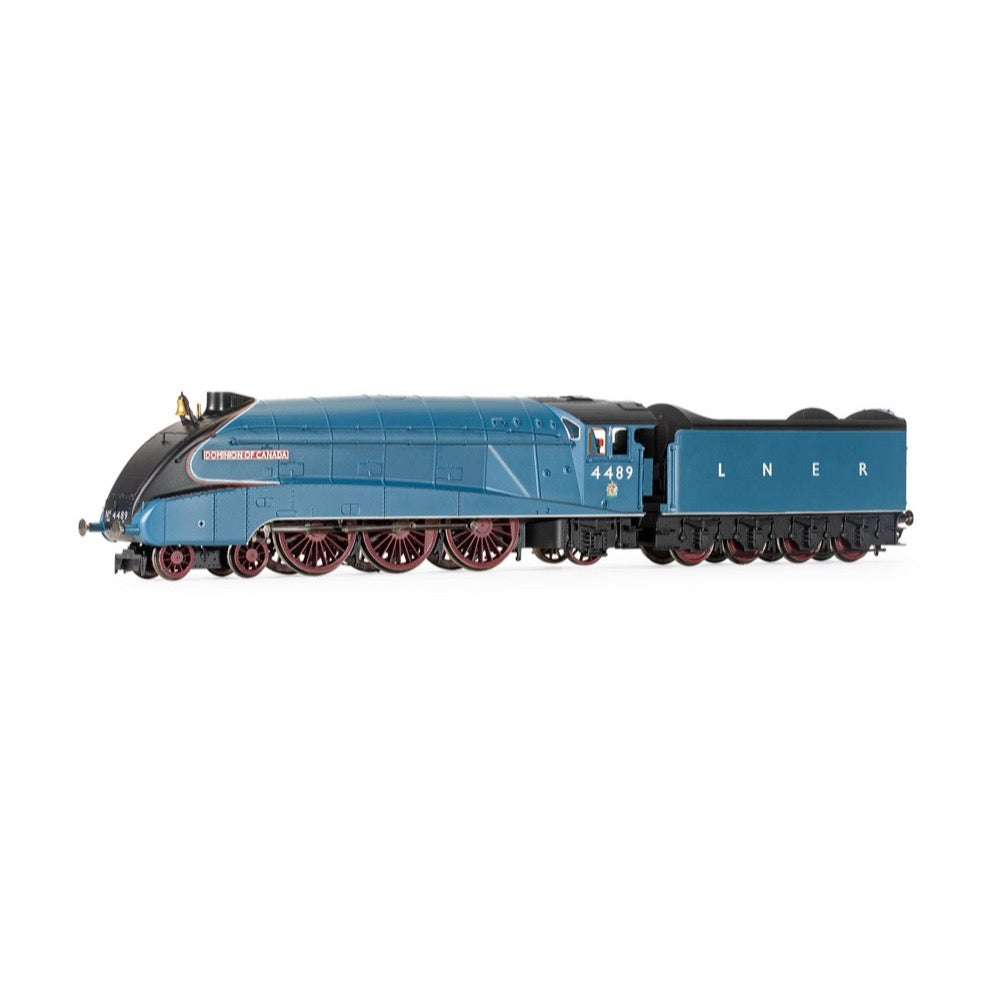
Hornby Dublo R30262 OO LNER A4 Class 4-6-2 4489 Dominion of Canada Great Gathering 10th Anniversary Era 10 Locomotive
179.00
$
<p>The LNER Gresley A4 is one of the most iconic express locomotives in Great Britain, with its streamlined casing a classic symbol of the attitude towards speed and design in the 1930s, which saw increased competition to the railways from road and air travel. The LNER Board knew they had to make travel between the major cities faster, more comfortable and more reliable.</p><p>Nigel Gresley, the LNER's Chief Mechanical Officer, travelled on the Fliegende Hamburger diesel locomotive in Germany and was impressed by its streamlining. However, he realized it was only efficient at high speeds. Gresley was certain that a modified A3 Pacific, with streamlining, could haul greater loads than other locomotives at the same speed or faster and a series of trials were conducted to confirm the A3's suitability.</p><p>With the trials successfully completed, the LNER Board gave Gresley the go-ahead to create the "Silver Jubilee" streamlined trains, the first of the new streamlined A4s. The streamlining of the A4s' steam circuit, higher boiler pressure and extension of the firebox to create a combustion chamber made them more efficient than the A3 as they consumed less coal and water- especially later on when they were also fitted with a Kylchap double chimney. This improved their free steaming capabilities further.</p><p>Their streamlined design not only made them capable of high speeds but created an updraught of smoke, obscuring the driver's vision, a major problem on the new Class A4 engines. The story goes that during wind tunnel testing, after several unsuccessful efforts to get the smoke to lift clear, a thumbprint was inadvertently left on the clay model just behind the chimney. This succeeded in clearing the smoke and was incorporated into the final design.</p><p>Dominion of Canada was one of the LNER A4s designated to haul the Coronation train in 1937 in the special Garter Blue with red wheels livery which would go on to become the standard livery of the Class. The five locomotives designated for this service also had enhanced silver trim on parts of the running board. Dominion of Canada was introduced on the 4th May 1937 as Woodcock, before having its name changed to the British Empire derived Dominion of Canada in June, again due to its role as a powerplant behind the Coronation train.</p><p>After a long service life, the locomotive was withdrawn on the 29th May 1965, becoming one of six A4 locomotives to be preserved. The locomotive is preserved in the Canadian Railway Museum where it is fitted with its unique Canadian Pacific Railroad bell. The locomotive returned to the UK for two years as part of the Great Gathering celebrations and has since been shipped back to Canada where it remains preserved.</p><p>Hornby Dublo A4 models feature a diecast body, just as their original Hornby Dublo counterparts would have seen. This is coupled with enchanted decoration which when paired with the diecast of the boiler provides a realistic finish to the body. The models contain a 5 pole motor with flywheel and are DCC ready with an 8 pin socket.</p><h3>Specifications</h3><ul>
<li>Item Length - Without Packaging (cm): 29.1</li>
<li>Item Height - Without Packaging (cm): 5</li>
<li>Item Width - Without Packaging (cm): 3.5</li>
<li>Item Weight - Without Packaging: 0.6</li>
<li>Item Scale: 1:76 Scale 00 Gauge</li>
<li>License: Yes</li>
<li>License line: Produced under licence for SCMG Enterprises Ltd. © SCMGE. Every purchase supports the museum.</li>
<li>Finish: Painted</li>
<li>Colour: Blue</li>
<li>Gauge: OO</li>
<li>DCC Status: DCC Ready 21 pin socket</li>
<li>Operator: LNER</li>
<li>Designer: Sir Nigel Gresley</li>
<li>Wheel Configuration: 4-6-2</li>
<li>Livery: LNER Garter Blue</li>
<li>Minimum Curve (mm): Radius 2</li>
<li>Motor: 5 Pole Skew wound</li>
<li>Number of Parts: 1</li>
<li>Class: A4 Class</li>
<li>Buffer Type: Sprung Metal Buffers</li>
<li>Coupling Type: NEM Tension Lock</li>
<li>Hornby Decoder Compatibility Primary: HM7000-8TXS: Bluetooth® & DCC Sound Decoder (21-pin)</li>
</ul>
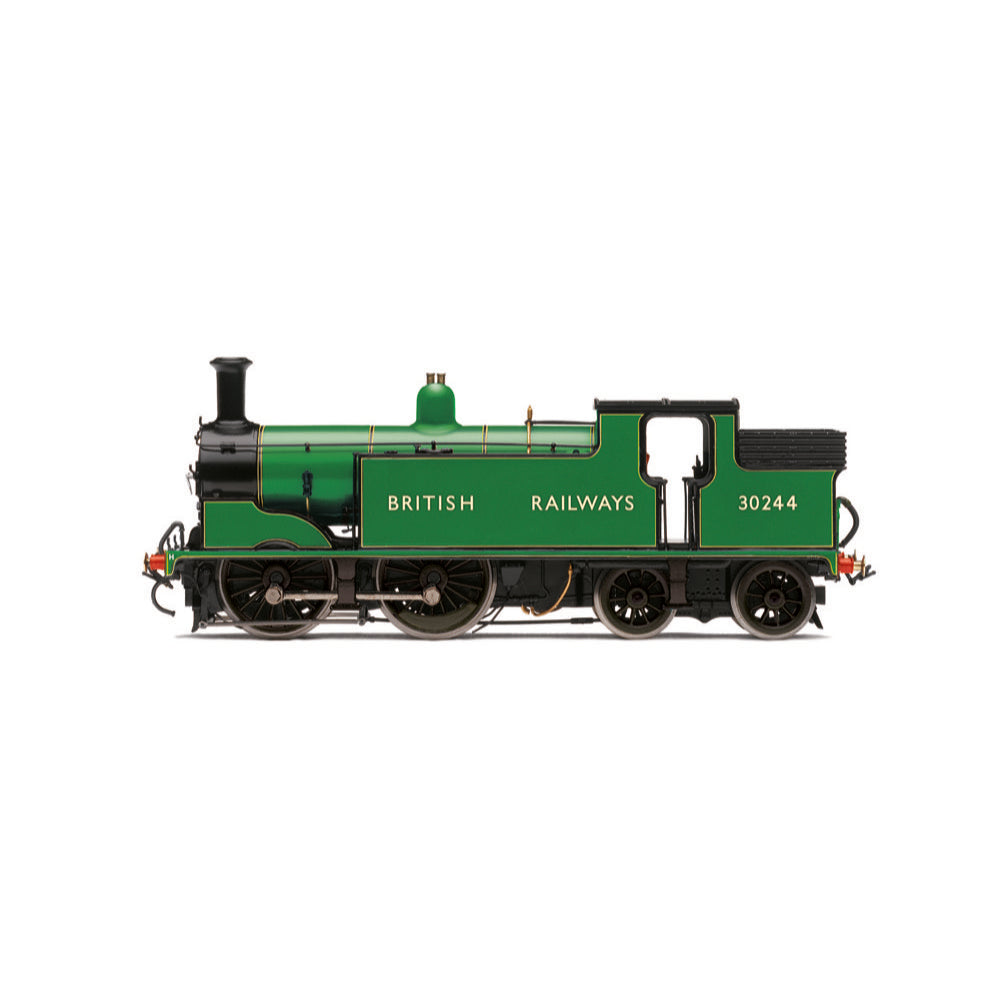
Hornby R30140 OO BR M7 Class 0-4-4T 30244
171.00
$
<p>Ideally suited to the demands of suburban workings with frequent station stops, the M7 possessed quick acceleration and good tractive power, equally at home on Branch line workings or acting as station pilots. Unfortunately, following a major derailment at Tavistock in 1898, the Class were withdrawn from fast passenger services, the 0-4-4 arrangement proving inherently unstable at continuous high speeds. While two M7s still exist in preservation, 30244 sadly is not among them after being scrapped at Brighton. This particularly special Hornby model of 30244 comes uniquely liveried in the previously never produced Southern Malachite Green, a particular mark of rarity. Of the Class, only 38, 242, 243 & 244 were turned out in fully lined Malachite Green for Waterloo Station pilot duties after the Second World War.</p>
<h3>Specification</h3>
<ul>
<li>Item Length - Without Packaging (cm): 13.9</li>
<li>Item Height - Without Packaging (cm): 5</li>
<li>Item Width - Without Packaging (cm): 3.5</li>
<li>Item Scale: 1:76 Scale 00 Gauge</li>
<li>License: No</li>
<li>Finish: Painted</li>
<li>Colour: Red</li>
<li>Gauge: OO</li>
<li>DCC Status: DCC Ready 8 pin socket</li>
<li>Operator: SR</li>
<li>Designer: Dugald Drummond</li>
<li>Wheel Configuration: 0-4-4T</li>
<li>Livery: Hornby Railways 50th Anniversary</li>
<li>Minimum Curve (mm): Radius 2</li>
<li>Motor: 5 Pole Skew wound</li>
<li>Number of Parts: 1</li>
</ul>
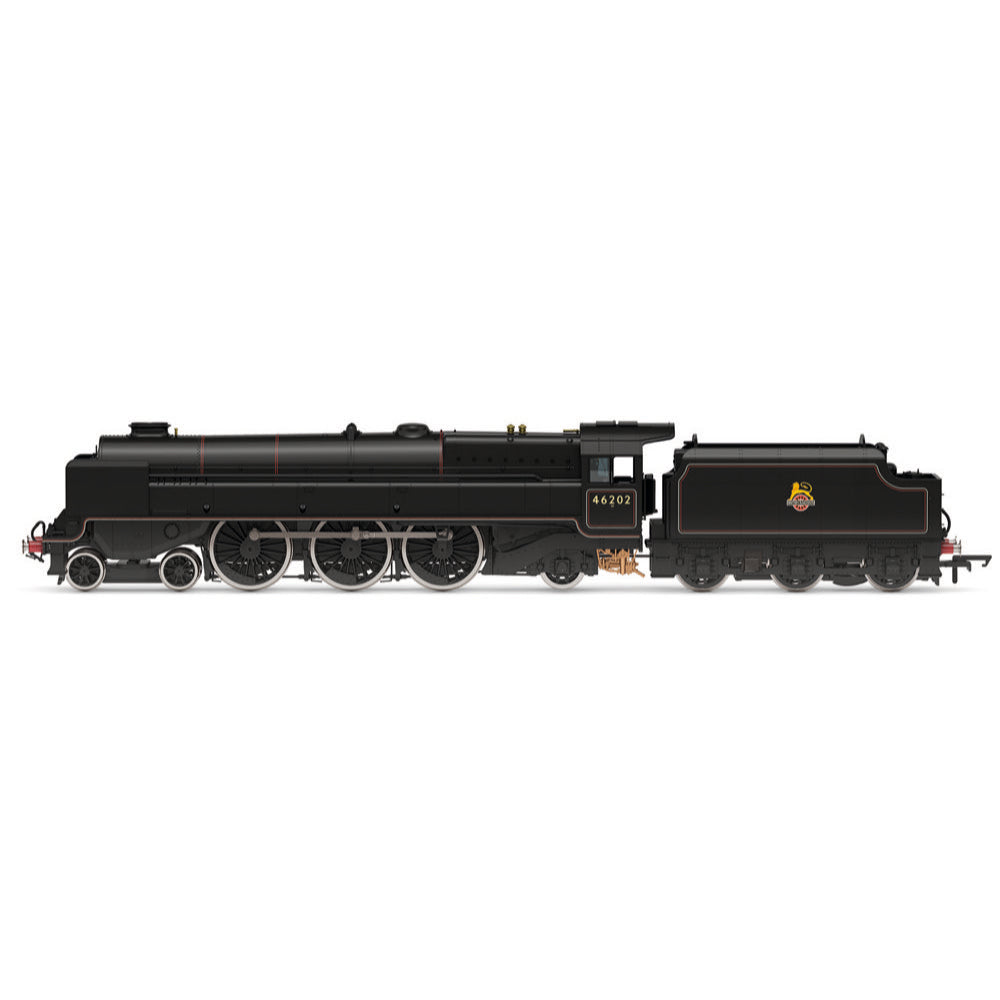
Hornby R30135 OO BR Princess Royal Class The Turbomotive 4-6-2 46202
175.00
$
<p>With the nationalisation of Britain’s railways, the ‘Princess Royal’ Class Turbomotive later shed its LMS insignia, to be replaced with the new emblem of British Rail and a black livery shortly after receiving its new crest. After a long period of general repair, Turbomotive returned to the main line in 1947 under the number 46202, continuing its function as a distinct and entirely uniquely designed steam turbine locomotive.</p>
<h3>Specification</h3>
<ul>
<li>Item Length - Without Packaging (cm): 37</li>
<li>Item Height - Without Packaging (cm): 16</li>
<li>Item Width - Without Packaging (cm): 6.5</li>
<li>Item Weight - Without Packaging: 0.32</li>
<li>Item Scale: 1:76 Scale 00 Gauge</li>
<li>Finish: Painted</li>
<li>Colour: Black</li>
<li>Gauge: OO</li>
<li>DCC Status: DCC Ready 21 pin socket</li>
<li>Operator: LMS</li>
<li>Designer: Sir William Stanier</li>
<li>Wheel Configuration: 4-6-2</li>
<li>Livery: LMS Black</li>
<li>Minimum Curve (mm): Radius 2</li>
<li>Number of Parts: 1</li>
<li>Class: Princess Royal</li>
</ul>
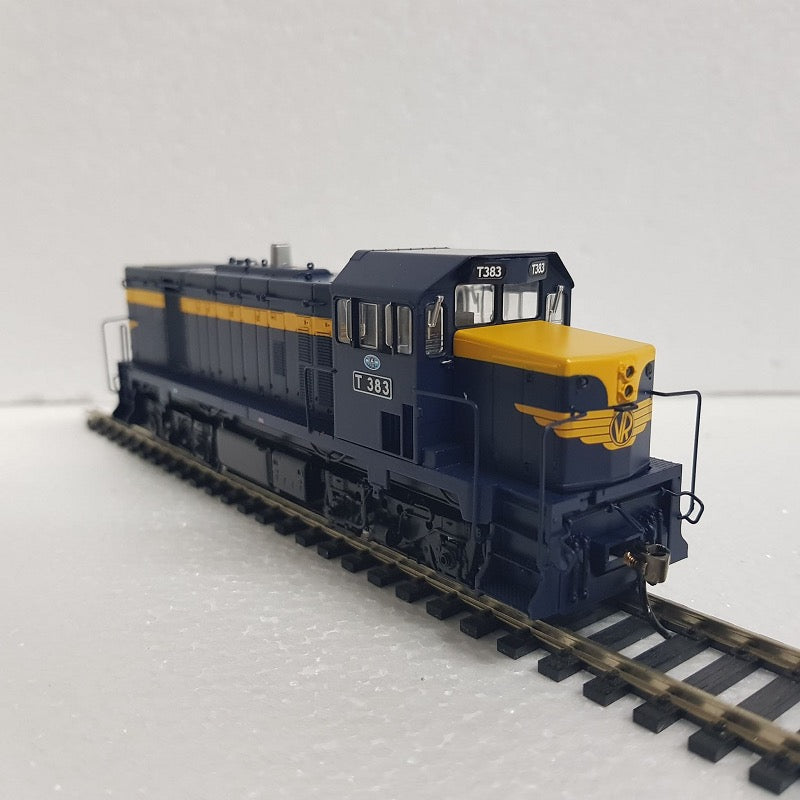
Powerline PT3-1-383S T383 VR Series 3T Class Locomotive DCC Sound
181.00
$
<h3>PT3-1-383 T Class, Series 3, Low Nose (T4) VR T383</h3>
<ul>
<li>HO/00 Scale</li>
<li>DCC Sound Ready</li>
<li>The T class are a class of diesel locomotives built by Clyde Engineering, Granville for the Victorian Railways between 1955 and 1968.</li>
<li>Perfect locomotive to add to your Australian train collection.</li>
<li>DC Operational locomotive, for DC/analogue use however can be converted to DCC operation.</li>
</ul>


